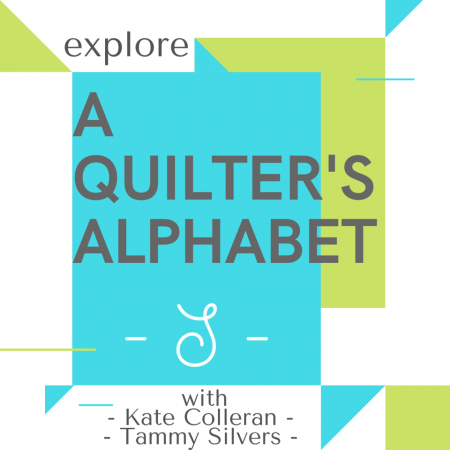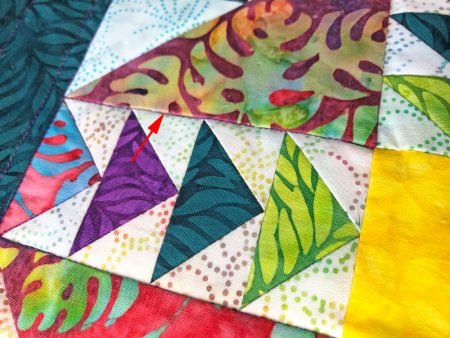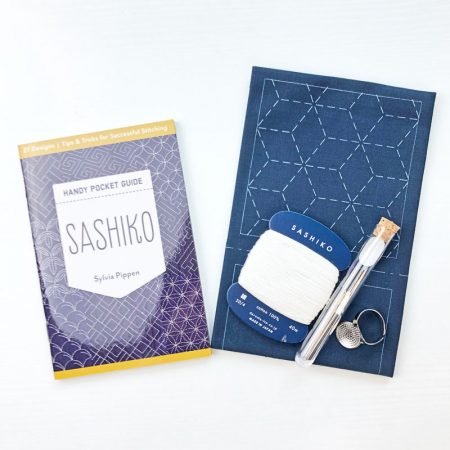Hi friends!
Today in the A Quilter’s Alphabet series, Tammy and I are up to the letter S! There are so many S terms in quilting it is going to take 2 posts! Well, actually 4 posts- 2 from me and 2 from Tammy!

Today I am going to share about stitch in the ditch quilting, seam allowance and the scant ¼”, sashiko and the satin stitch. Are you ready?
Stitch in the Ditch quilting
This refers to a quilting technique when you making your stitches right next to the seam in pieced or appliqué quilts.

This method works best when the seams of the pieced top have been pressed to one side.
Seam allowance
The seam allowance, created when 2 pieces of fabric are sewn together, refers to the amount of fabric between the raw edge of fabric and the stitching line. In quilting, this is usually ¼”. In garment making, it is often ⅝”.
So what is a scant ¼” seam and why would you use it? While the ¼” seam is the gold standard of quilting, sometimes your quilt block may not end up the correct size. Why?

Because, especially if you press your seams to one side, the fold of the fabric, and your thread, take up some space. So your piece may be just a few threads shy of a ¼”. Multiple that by all the seams, especially in a complicated block with many seams, and your block could end up off by ⅛”, ¼” or more! Yikes!
Using a scant ¼” seam will help to ensure the final block is the right size!
Click here for my blog post with my best tips for getting that perfect ¼ seam.
Sashiko
Sashiko is a form of embroidery, that uses a running stitch with thick embroidery thread, often white but not always, to create patterns. The Japanese word sashiko means “little stabs”.

The geometric patterns were often used to patch or repair worn or torn fabric using patches and stitches.
C&T Publishing has a great little guide- click here to learn more!
Satin Stitch
The satin stitch is a form of a zigzag stitch where the stitches are very close together. This stitch might be used in quilting around appliqué pieces; it encloses the raw edges and secures the appliqué piece to the fabric foundation.
Now, be sure to click here to head on over to Tammy’s post where she shares information about more S quilting terms!
Next week in our Exploring Quilting Basics series, Tammy and I are sharing about the Log Cabin block. See you back here then!
happy quilting!
Kate